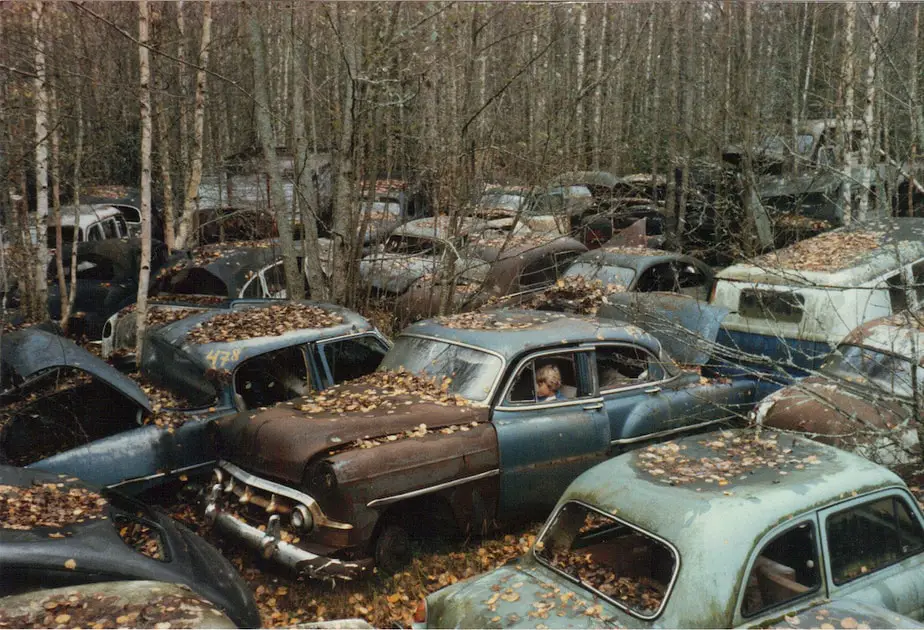The U.S. is famous for being the land of the automobile. From Henry Ford’s mass production of the Model T introducing the world to the affordable car, to the historic allure of a 1950s road trip on Route 66, and the flamboyant and powerful sex appeal of 1960s muscle cars, American motoring has become an inseparable part element of the American identity.
However, by prioritizing the car above everything else, America lost its way and removed all other alternatives to using a car at a structural level. Highways were built to cut right down the middle of most American cities, mostly though poorer neighborhoods; destroying their community cohesion and killing any chance of the economic mobility among the residents. Meanwhile, areas outside of the city prioritized single family homes and built them en masse with mandate of lower density, single family homes in areas zoned exclusively for such.
Table of Contents
Background of American Suburbia
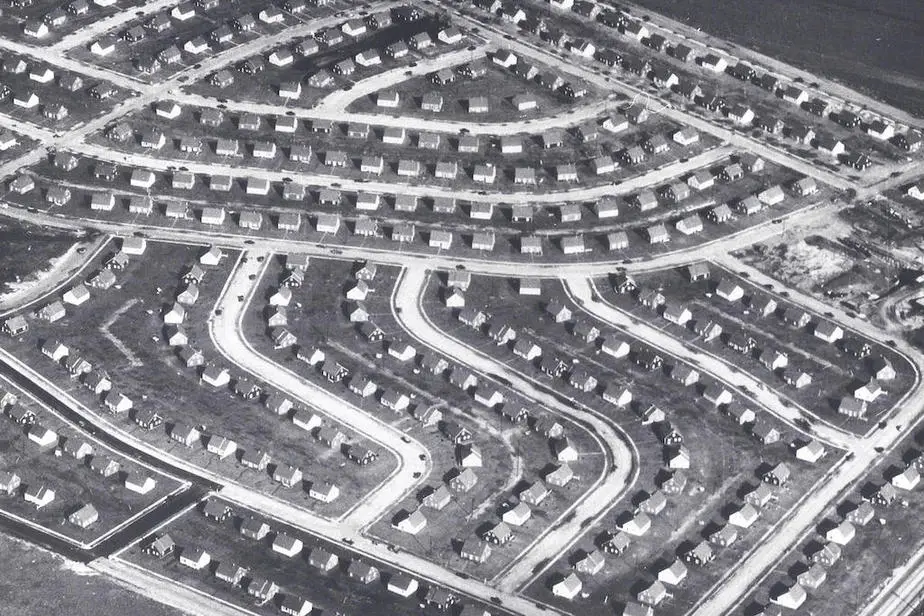
Starting with Levittown, NY in 1947, a model of car dependent suburbia began to emerge, and was marketed to returning World War II veterans as “country living for all,” and presented itself in stark opposition to the close quarters (and thus the fighting) many of them experienced while deployed in Europe. Over the last 75 years, this model has spread throughout the U.S, becoming the default model of American land development, and culturally entrenched to the point that living in such a community is now the standard definition of “The American Dream.”
Over the years, it has been heavily promoted and subsidized by all branches of government, all of whom proceeded to standardize this model to the point of legally removing the option to develop anything else! As time has gone on, the structural deficiencies and financial unsustainability of this model of car-dependent suburbia have become clear, and that model is much to the detriment of everyone, including, paradoxically, car enthusiasts!
If you are interested in a comprehensive analysis of the problems of car-centric suburbia, check out the Not Just Bikes YouTube Channel, their channel goes into much more detail about it than my article.
Few places of interest to actually drive to

As a car enthusiast, I love driving, and for me to maximize my enjoyment of having a car, having notable places to actually drive to is a must, and on this crucial test, the ubiquitous car-dependent suburbia found in America fails miserably. Even if I like driving, that doesn’t mean I like driving in boring, predictable, corporatized places. Driving across acres of parking lots that are NEVER FULLY USED? Pass. Driving to a strip mall or shopping center where the options for buying stuff and entertainment are the same LITERALLY EVERYWHERE in the U.S? Also pass.
Part of the fun of owning an exciting car is to use it on special occasions to go to truly special places. What’s the fun in owning a Ferrari if the only places you can drive it to are Target, Dick’s Sporting Goods, Costco, 99 Restaurant, or any other boring chain that you can find in Anytown USA? I’d rather have a boring car and go to interesting places than the other war around. Speaking from my own experience, I had more fun driving across central Japan to a Hot Spring Hotel in a rented, CVT Honda N-Box and a rented diesel Fiat 500X in coastal Portugal than I ever had driving in car-dependent suburbia in my 300hp 6MT Volvo S60R.
If I can have both a fun car and a fun route to drive on, that is perfect. For me, the fun of having a cool car is taking it to truly great places. If, for example, I had the opportunity to take a vintage fiat 500 on a weeklong tour of different historic cities across Italy and stop at interesting sites along the way, that would be a perfect use for a vintage car!
Few alternatives to driving

Despite America being centered around the car, paradoxically, the car dependence means that it is much more difficult to buy a car you are able to truly make your own. This is because you absolutely must have a car to get to and from where you need to go, which means, if you, like most people, have to go to and from your job in order to make a living, you cannot afford to be without a car, even for a short time. This means that cars, by situational necessity, have come to be seen in the same light as washing machines: something to do a specific task without fault day-after-day, and nothing more, and manufacturers have responded accordingly.
Have you ever have asked yourself why are new cars so boring? This is why.
When combined with stagnation in real wages over the last half-century, people have less money to spend. Modifying your car to make it go faster or look better? A hard sell for someone with tight finances and needs to pay for other things, like food, heating, and gasoline to get to and from work! In America, car enthusiasts often say: “Don’t modify your daily (driver),” as owning an enthusiast car and modifying it can cause kinks that need to be worked out and affect reliability.
What this means is if you want to own an enthusiast car and modify it, and not hinder your ability to live other parts of your life, you really need to own AT LEAST two cars, with one to use as an everyday, reliable car, and another to modify. For people that can only afford one car, the necessity of eating and earning a living trumps any desire for an artistic outlet through modifying and customizing a car.
In contrast, there are two nations that come to mind for being the opposite of car dependent suburbia: The Netherlands and Japan. Both have safe walkable communities with many alternatives to driving, including cycling, buses, trams, trains, and, of course walking. What else do these nations also have? Why, incredibly vibrant communities for enthusiast car ownership, with Japan’s considered one of the best in the world! Because Japan and the Netherlands have viable alternatives to driving, that means that not having a car isn’t as big of a deal.
For someone that can only afford ONE car (most people), it is thus financially much easier in places like these to own and/or modify it. Since residents of these countries can practically still take a train, bicycle, or bus to get around anywhere in the country, being without a running, driving car for awhile isn’t a big deal, taking a lot of pressure off of getting the car to just get going again, and allowing people to take their time, and customize their car to their hearts’ content.
Poor road maintenance
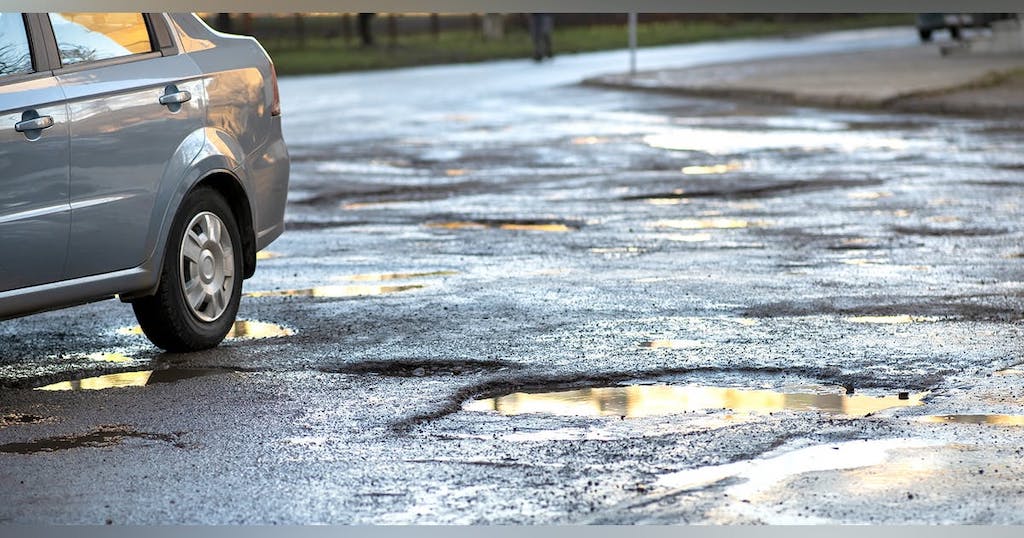
Imagine this: you spend a lot of time and money to get your custom car absolutely perfect; 100% to your specification, complete with rare parts you just can’t get anymore or will cost you a fortune to replace. First time you take it out for a spin…bang! You hit a pothole, your wheel is bent and rendered completely unusable, and you are out hundreds, if not thousands of dollars. You just lost your rim, a lot of money, and access to your car until you fix it, all because the town couldn’t find the money to fix the roads. Try to make the town pay? 99.9% of the time, not happening.
Such is the very real anxiety of driving in America, especially for modified car owners in salt belt states. Why would I even bother modifying my car if the roads are salted and will rust it out it within 10-15 years, and why would I bother keeping my car nice if the road quality is so poor, I risk damaging my car anyway simply by using it for its intended purpose?
Poor quality driver education
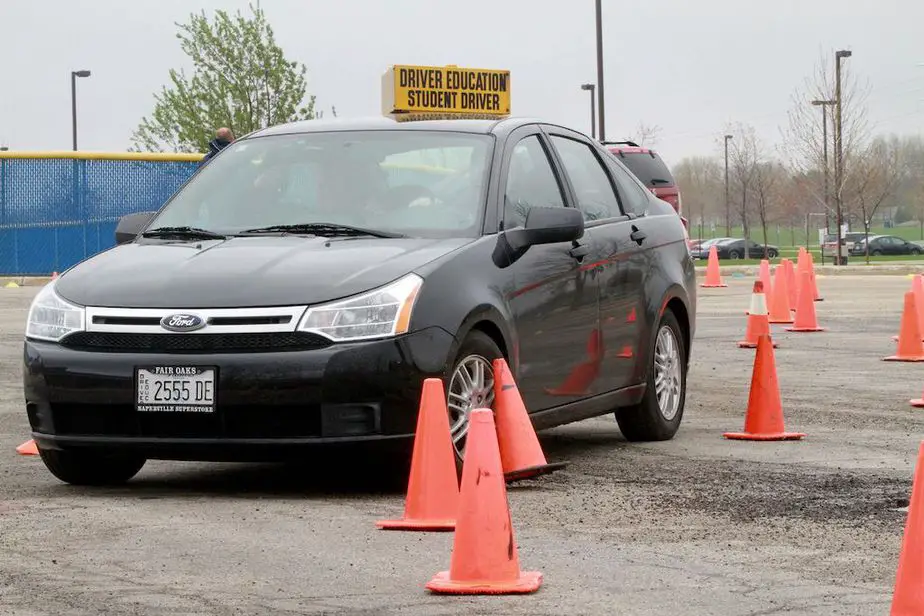
Americans, compared to motorists in many other countries, have very little in the way of driver education. The basic requirements, in most American states, to get a driver’s license for people aged 18+ are very simple: a vision test, a written exam of 25 basic theory questions, and a road test that looks to see if you can back up, parallel park, do a three point turn, and overall conduct yourself in a safe manner on the roads.
In my personal experience, every stage is laughably easy. The written test generally only requires a 60% to pass, and if you fail, you can re-take the test once the same day. The road test is simply showing you can parallel park, do a three-point turn, back the car up, and back into a parking space. For those aged 16-18, a driver’s education course is required, and a few hours of supervised driving by a parent, and this is common average. Some states make it much easier than others, and once you have a driver’s license in one, you can easily transfer it to any of the others. In summary, it’s a patchwork of laughably easy regulations to bypass.
In comparison, many other nations require much more comprehensive education. Take for example Germany. Drivers are required to do theory classes and log a certain number of hours in different situations, like urban driving and autobahn driving, and, interestingly, a first-aid course in the event you encounter a crash. To put it simply, the tests are much more difficult, and there is less leeway for failure that requires a re-take at a different date. And, unlike the U.S, drivers aged 50+ are required to do a vision exam every 5 years to ensure it is still safe for them to drive.
How does this affect driving in the U.S? That leads us onto our next part…
Poor road safety and design
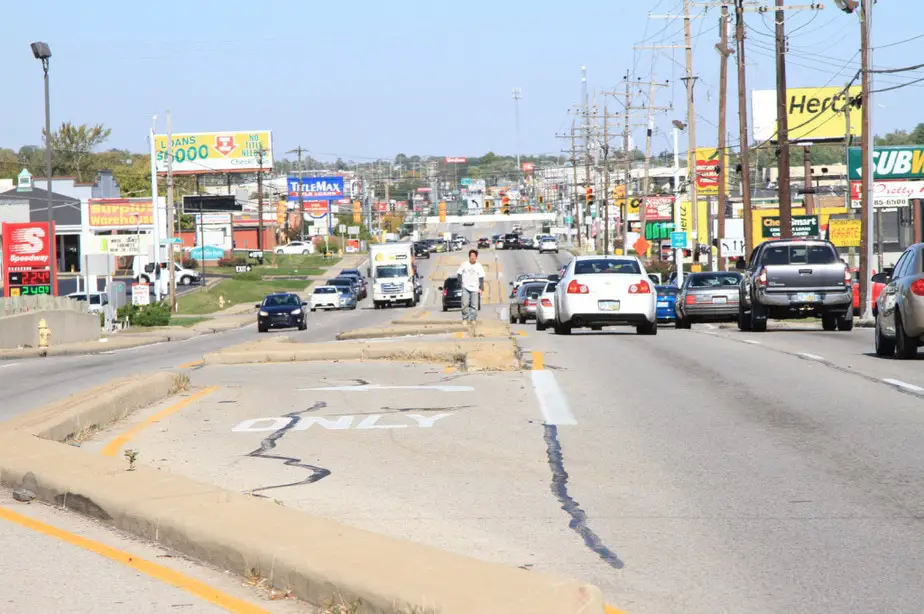
All these contribute to the biggest issue for people who drive on American roads: road safety. A part of this is by design, the large “stroads” have high speeds and many obstacles such as stop lights, stop signs, intersections, and turns to enter businesses that require crossing the lanes of oncoming traffic. In short, it combines the elements of both a side street and a highway into one terrible mess that is good neither at being a street that stimulates small business nor a high speed road that effectively moves a lot of cars with minimal congestion. And these are common to the point of ubiquity in America!
A lack of alternatives to driving means people who either don’t want to be on the roads or shouldn’t be on the roads are forced onto them by design. These people are more likely to be distracted, unfocused, prone to road rage, and cause crashes and other traffic fatalities. Poor road maintenance means more opportunities cause a problem with one of the cars on them, which can lead to crashes and other incidents if not handled properly. Poor driver education means that the drivers that are on the road are less likely to handle incidents properly in the first place!
All these contribute to a very poor road safety record, as only India, China and Brazil have more total road traffic deaths than the U.S. Per 100,000 inhabitants, road traffic deaths in the U.S. are the highest in the developed world, and higher than those in many developed countries, with the Philippines, Jamaica, Russia, Uzbekistan, Turkey, and Mexico are all safer than those in the U.S. Knowing this, why would I even WANT to drive in the U.S, especially in a classic car that can’t be easily replaced, and is less crashworthy than a newer car?
Summary
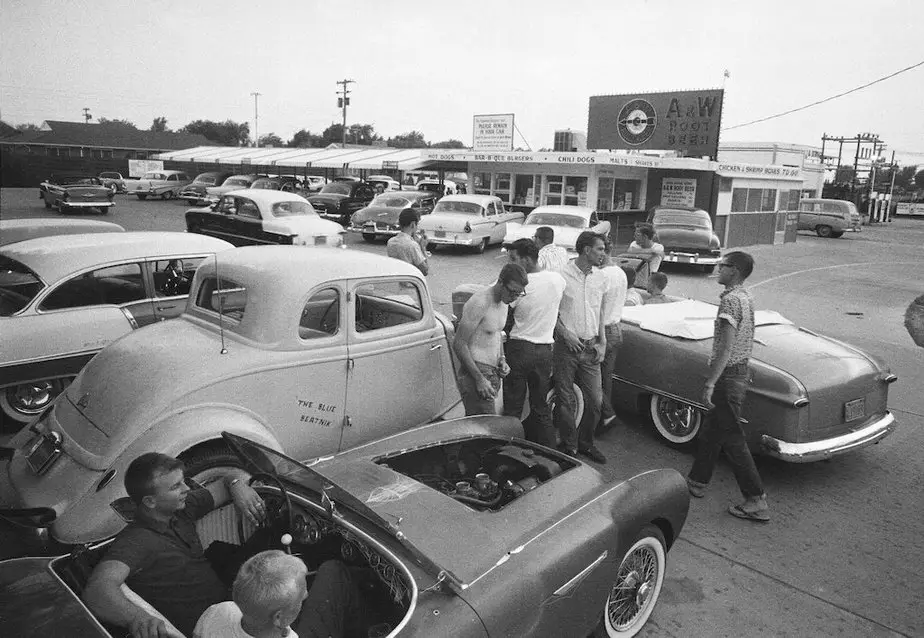
The U.S. may seem like the land of the automobile and a haven of car culture, but make no mistake: it is not friendly to drivers. And let’s be honest. What do most people think of when you think “American car culture?” Usually, it is American cars made between 1946 and 1972, with shiny chrome bumpers, flamboyant, jet-age designs, bright colors, and massive V8 engines.
Typically, I imagine them all parked at a cruise night hosted at a 1950s style diner with warm-glowing, neon signs, where you can go inside, pop a quarter into the jukebox, pick your favorite Elvis song, and have a nice hamburger, some fries, and a shake. Translation: all of this distinctive American car culture capital is a solid 60-75 years out of date!
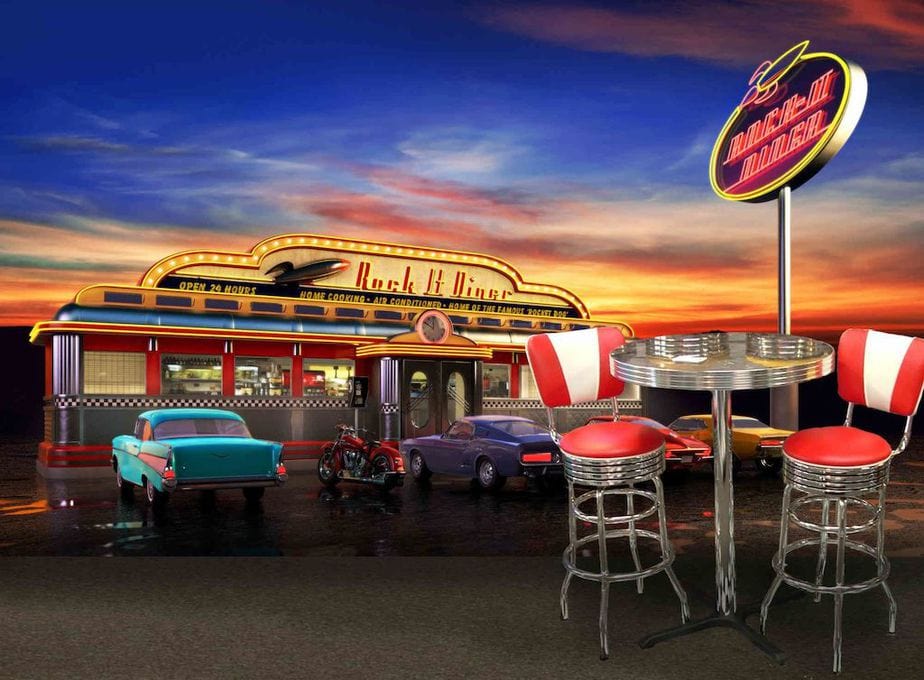
Coincidentally, all this cultural capital was built up before car dependent suburbia was as ubiquitous as it is today, and to make something like that again would be impossible with modern America’s chosen land use model. When combined with poor road safety, flawed road design, inadequate driver education, and the fact that the American people have no choice but to drive, America is far from a car enthusiast heaven. On the contrary, it is quite the nightmare in certain aspects! And the car culture America did organically generate back from before this massive experiment in car dependent suburbia was fully deployed!
Fortunately, America is better than many other nations in one key aspect for car enthusiasts: most states actually are pretty lenient when it comes to using modified cars on the roads, so despite the adverse circumstances, I believe car culture will find a way. However, Sweden and Japan also have similarly strong car cultures AND walkable areas that are actually interesting to drive to, so America could perhaps learn a few things from those places?
What things do you think are good/bad about driving in America? Which countries do you think have a better development model? Let me know in the comments below.
